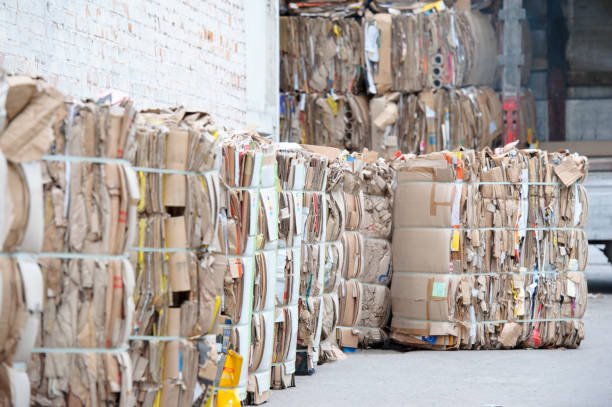Why can Paper Not be Recycled More than Seven Times: Paper recycling is a significant component of the global effort to reduce waste and conserve resources. The process involves collecting and reprocessing used paper products to create new ones. However, there’s a limit to how many times paper can be recycled, and that magic number is seven. This article delves into the reasons behind this limitation, examining the science, technology, and practical aspects of paper recycling.
What is Paper Recycling, and the Process Involved
Paper recycling is the process of collecting, sorting, and reprocessing used paper products into new paper products. It is an essential aspect of waste management and resource conservation, as recycling paper helps reduce the amount of waste that goes to landfills, saves energy, and conserves raw materials such as trees. The paper recycling process typically consists of several stages:
- Collection and sorting: Used paper products are collected from various sources, including households, businesses, and institutions. These materials are then transported to recycling facilities, where they are sorted based on their type and quality. Common categories include office paper, newspapers, magazines, cardboard, and mixed paper.
- Pulping: The sorted paper is mixed with water and sometimes chemicals to create a slurry called pulp. The pulping process helps break down the paper fibers and separate them from other materials such as ink, coatings, and adhesives. This can be achieved through mechanical methods, such as grinding, or chemical methods, which involve the use of substances like sodium hydroxide to break down the cellulose bonds.
- Cleaning and deinking: The pulp is then cleaned to remove contaminants such as staples, plastic, and other non-paper materials. Deinking involves the removal of ink and adhesive particles from the pulp. This is typically done using a combination of mechanical processes, such as screening, and chemical processes, like flotation, which use chemicals to separate ink particles from the pulp.
- Refining and bleaching: The cleaned pulp may undergo further refining to improve its fiber properties, such as strength and bonding. During this stage, the pulp is processed through machines that separate and align the fibers to create a more uniform and cohesive material. If needed, the pulp may also be bleached to improve its brightness and color. This is commonly done using hydrogen peroxide or other environmentally friendly bleaching agents.
- Papermaking: The refined and bleached pulp is now ready to be made into new paper products. The pulp is spread onto a moving mesh screen, which allows the water to drain, leaving behind a thin layer of fibers. The fibers bond together as the water evaporates, forming a sheet of paper. The paper sheet then passes through heated rollers that further remove moisture and compress the fibers, creating a smooth and uniform surface.
- Finishing and converting: The new paper is wound onto large rolls, which are then cut and trimmed to the desired size and shape. The paper may also undergo additional finishing processes, such as coating or embossing, to achieve specific properties or appearance. Finally, the paper is packaged and shipped to customers for various end-use applications, such as printing, packaging, or other paper-based products.
By recycling paper, we can reduce the environmental impact of paper production, conserve valuable resources, and contribute to a more sustainable and circular economy.
Why can Paper Not be Recycled More than Seven Times
- The Fiber Factor: Degradation and Shortening
The primary reason for the seven-cycle limit lies in the nature of paper fibers themselves. Paper is made from cellulose fibers derived from wood or other plant-based materials. These fibers are the fundamental building blocks of paper products, giving them their strength and flexibility.
Each time paper is recycled, the fibers undergo mechanical and chemical processes that cause them to degrade and shorten. With each successive recycling cycle, the fibers become weaker and less cohesive, leading to a reduced ability to form a strong paper structure. After seven cycles, the fibers become too short and weak to create a viable paper product.
- The Contamination Conundrum: Ink and Adhesives
During the recycling process, paper products are mixed with water to create a pulp, which is then cleaned to remove contaminants such as ink, adhesives, and other substances. While modern deinking and cleaning technologies have improved, they are not perfect. Residual ink and adhesive particles can accumulate with each recycling cycle, negatively impacting the quality and appearance of the recycled paper. After seven cycles, the accumulated contaminants can render the paper unsuitable for further recycling.
- Energy and Resource Efficiency: The Balancing Act
Recycling paper saves energy, water, and raw materials compared to creating new paper from virgin materials. However, as paper undergoes multiple recycling cycles, the energy and resource requirements increase due to the decreasing efficiency of the process. After seven cycles, the energy and resources needed to recycle paper outweigh the benefits of recycling. At this point, it becomes more environmentally friendly to use virgin materials to create new paper.
- Practical Aspects: Quality and Market Demand
The quality of recycled paper products is another important consideration. As paper fibers degrade and contaminants accumulate, the quality of the recycled paper declines. After seven cycles, the paper may no longer meet the quality standards required for specific applications, such as printing or packaging. Consequently, market demand for low-quality recycled paper is limited, making it economically unfeasible to recycle paper beyond this point.
The seven-cycle limit of paper recycling is a result of the interplay between the natural properties of paper fibers, contamination issues, energy and resource efficiency, and practical aspects of quality and market demand. As technology continues to advance, new techniques may help extend the number of times paper can be recycled without compromising its quality. However, for now, the seven-limit remains a crucial consideration in the journey towards a more sustainable and eco-friendly paper industry.

